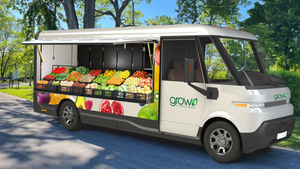Demand for Transparency Drives SmartLabel's Growth
Half of consumers are 'very' or 'extremely' interested in learning more about a product than a physical label can display. Half of consumers say they're "very" or "extremely" interested in learning more about a product than they can get from a physical product label.
June 14, 2022

A large majority of U.S. consumers—83%—are at least somewhat interested in learning more about products than what's contained on a physical label, a recent report from SmartLabel noted, citing Nielsen research, with half saying they're "very" or "extremely" interested in learning more.
What are the implications for CPG companies and retailers? Stacy Papadopoulos, general counsel and SVP of operations and initiatives for the Consumer Brands Association, a CPG trade group, spoke to WGB recently about the opportunities for consumer education and engagement via digital labels.
SmartLabel, created in 2015 by the Trading Partner Alliance, a group formed by the Consumer Brands Association and the Food Marketing Institute, is a digital tool that provides consumers with detailed product information beyond what is printed on the package’s label. In an interview, Papadopoulos discussed SmartLabel’s beginnings, its growth, SmartLabel businesses and consumers, and what’s next for the program.
Jeniece Drake: How did SmartLabel begin? Why was it felt that this type of information should be made available?
Stacy Papadopoulos: Six years ago, this began as an industry initiative. Companies knew that consumers were looking for more information. Consumers were becoming more mindful about the things they use and buy. Companies were looking to provide more information beyond the label, and about the products from a trusted source. So, they wanted to create SmartLabel.
You've found strong interest in SmartLabel in particular with consumers who have food allergies and other ingredient sensitivities. Why is providing a deeper look into ingredient and production information important?
The demand for transparency is growing more prevalent. [Consumers want to know] where was this product made, want to see a full list of ingredients. Consumers will do research before purchasing.
[SmartLabel] has become a trust mark. When [consumers] just see SmartLabel on a product, they know that that brand is committed to consumer transparency.
Eighty percent of consumers are more loyal to a brand that is committed to providing this information beyond the label.
What are some of the benefits for the companies that use SmartLabel?
[SmartLabel] showcases [the] brand’s commitment to transparency. It's another way to talk to consumers, a different channel, an education channel for product information.
[SmartLabel also] meets consumers where they are—more and more consumers are online, [there’s a] growth of online purchasing including grocery, it’s more convenient. And a more technical point—we make sure that SmartLabel is a way to comply with any regulatory disclosure requirements.
Could you speak more about how SmartLabel is being received by companies and consumers? How has the response been to SmartLabel? Has the company seen an increase in usage?
We track a couple of different metrics as a program. There are about 80 companies currently using SmartLabel, and so that represents over 1,000 brands and about 94,000 products.
Since summer of 2019, there’s been growth of 10% in terms of dollar share of SmartLabel products, and 20% in terms of the number of items in an average grocery cart.
As of December 2021, SmartLabel products as a percentage of the average grocery cart constituted 54% of the dollar share of items in that cart, and 78% of the actual items. So definitely seeing a really positive growth trajectory for the program.
What is something new that has been added to SmartLabel? What does SmartLabel look like going forward?
Bioengineered. Products are required to comply with that new bioengineered disclosure standard as of Jan. 1.
Enabling companies to talk about whatever that thing is that they care about on the program, [and] having that ongoing dialogue with consumers is what we’re trying to do. We're looking at how SmartLabel can be a solution across the board for things that consumers are thinking about. How can we use SmartLabel as a tool to educate about recycling, recalls … provide real-time information to consumers. SmartLabel is a platform for doing that.
What would people be surprised to learn about SmartLabel?
When [consumers] would find a product that didn’t have SmartLabel, their assumption was that brand had something to hide. So, as the program continues to grow, again, SmartLabel as a trust mark … the absence of seeing SmartLabel also says something about your product.
Once people become more familiar about SmartLabel, I think they become really dependent on it. There is a lot of information out there. If you want to know about products, and find it in a simple online format, SmartLabel is kind of your go-to resource.
About the Author
You May Also Like




